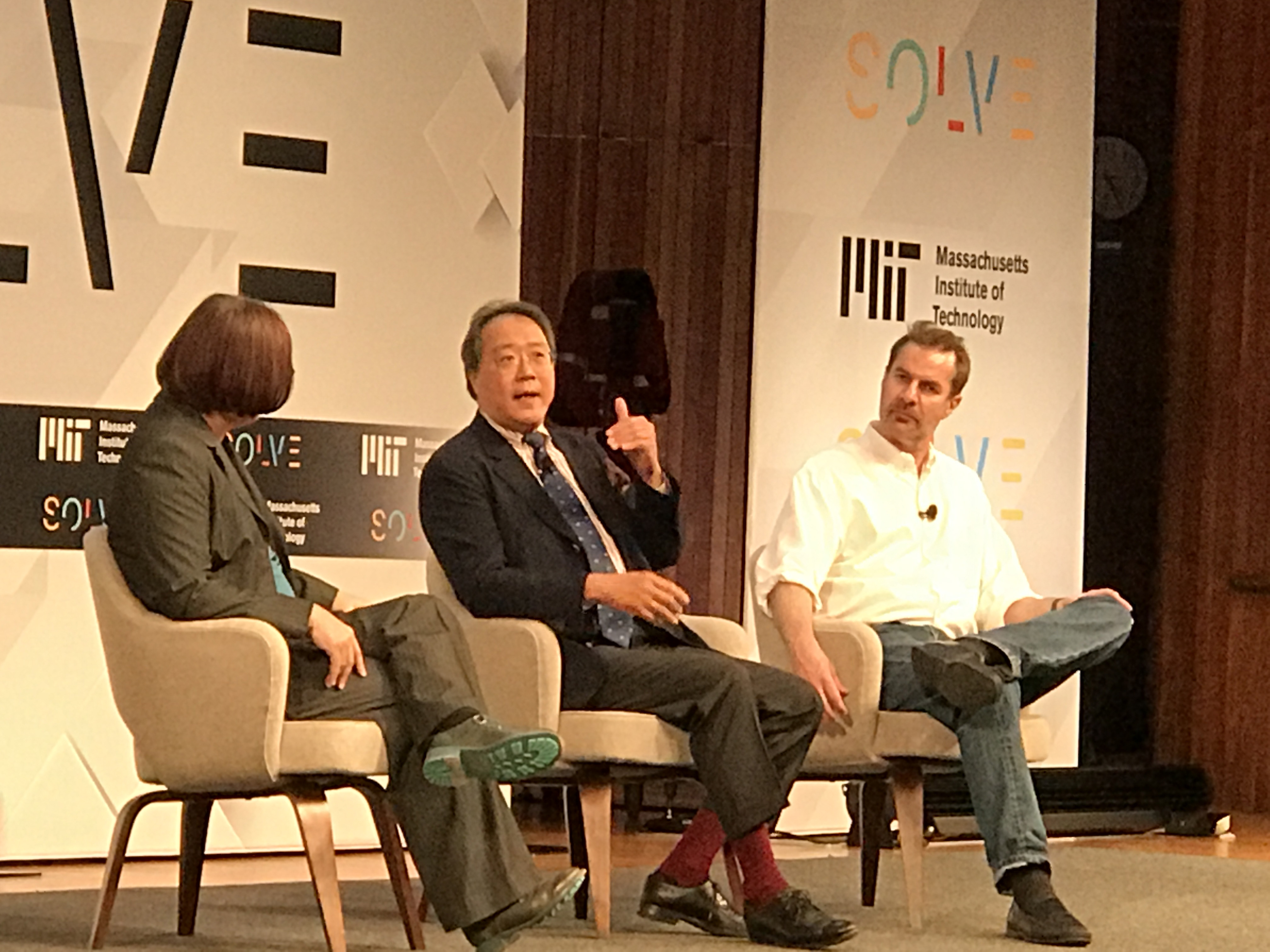Does Technology Create More Opportunities Than It Destroys?
-
-
slice.mit.edu
Filed Under
Recommended

Cellist YoYo Ma, center, Professor Erik Brynjolfsson PhD ‘91, and moderator Ina Fried discuss technology's impact. Photos: Nancy DuVergne Smith.
This modern battle, new tech vs. old jobs, played out at the Solve at MIT session May 8 in Kresge Auditorium, the kickoff to a three-day gathering of the MIT leaders, decision makers, and people proposing solutions to tough, real-world challenges. And the answer? Yes…eventually.
“We are not seeing the end of work or that robots are taking over all the jobs,” says Sloan faculty member Erik Brynjolfsson PhD ‘91, director of the MIT Initiative on the Digital Economy. “Machines are not good at creative work or problem solving or interpersonal skills needed by advisors, leadership, teamwork, and sales. High EQ [emotional intelligence] quotients are becoming more in demand and we are seeing growing jobs and pay in these areas."
Robots are disrupting many industries by taking on some tasks people don’t necessary want to do to – such as repetitive tasks in auto assembly or dangerous work like bomb detection. Jobs are being lost but efficiencies and new industries are creating broad opportunities. However the gains and losses are not yet in balance. “Technology is creating more wealth than ever before but there is more uneven distribution that ever before,” he says.
Cellist YoYo Ma, who shared the stage with Brynjolfsson, advocated for taking the time saved by technological innovation to make lives more creative, useful, and meaningful. “It’s not the technology we need to worry about, it’s us,” Ma says. “We need to figure out what we are here for.”
Solve, an MIT-based initiative launched in 2015 to address major global challenges with fresh thinking and resources, began with these challenges: reducing carbon emissions, preventing chronic diseases, and educating 50 million young refugees.

The campus gathering, which included speakers, workshops, and Jeffersonian dinners, was the culmination of more than a year of activity that involved proposed solutions from more than 400 people from 57 countries, which was whittled down to 29 solvers through pitch competitions. One solver, Hila Azadzoy, head of academics at Kiron Open Higher Education, described how her group helps refugees in Germany gain access to higher education by tapping into digital opportunities through MIT’s edX program and online language courses. Refugees can overcome obstacles, such as uncertain legal status and lack of credentials, by taking two semesters of college-level courses and then transferring to universities.
Biotech entrepreneur Kiran Mazumdar-Shaw, chair of Biocon Limited, pointed to the challenges of her own country, India, and other developing countries.
“We forget about the under-resourced and under-skilled developing world. What we are looking for is technology to bridge a lot of these deficits,” says Mazumdar-Shaw. “India is trying to create the biggest digital market in the world, a cashless society. Uber, and its Indian counterpart Ola, have created a million jobs…because we now have 650 million mobile phones in India, which has suddenly allowed people to have service on demand…We look at technology as a huge job multiplier.”
New challenges for the coming year were announced: Youth, Skills and the Workforce of Future; Women and Technology; Brain Health; and Sustainable Urban Communities. People with proposed solutions will present their ideas at Solve challenges and participate in workshops with Solve members to develop partnerships to pilot and implement the solutions. The deadline for the first proposals is August 1.
One offer is already on the table. Ma, after playing three Bach pieces representing joy, the inner self, and wonder, announced he would take on responsibility for matching creative mentors to at least three teams in the coming year.
MIT alumni are eligible for discounted membership in the Solve community. Members get first-hand access to innovative ideas, mentoring and networking opportunities, and the opportunity to shape future Solve challenges.







